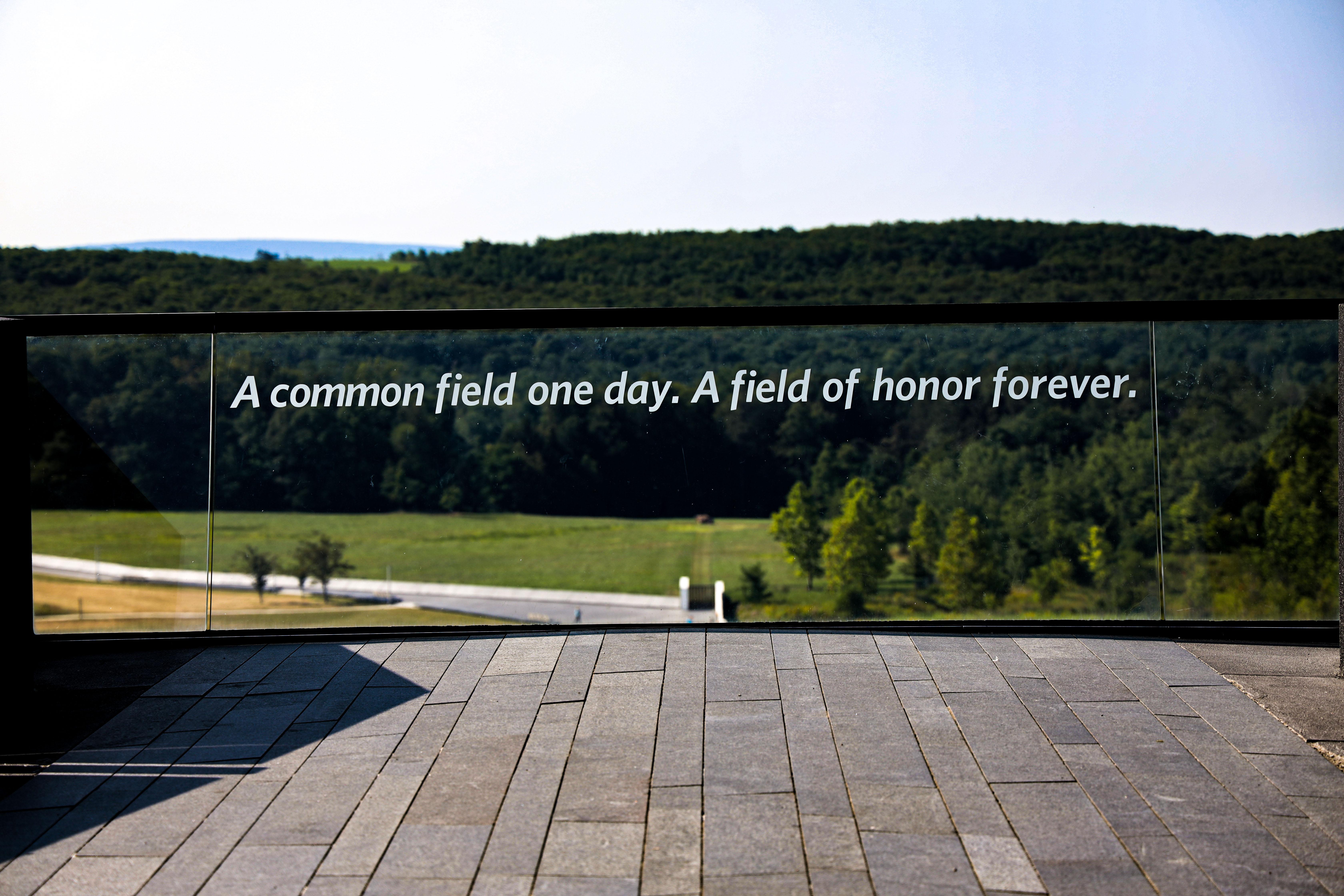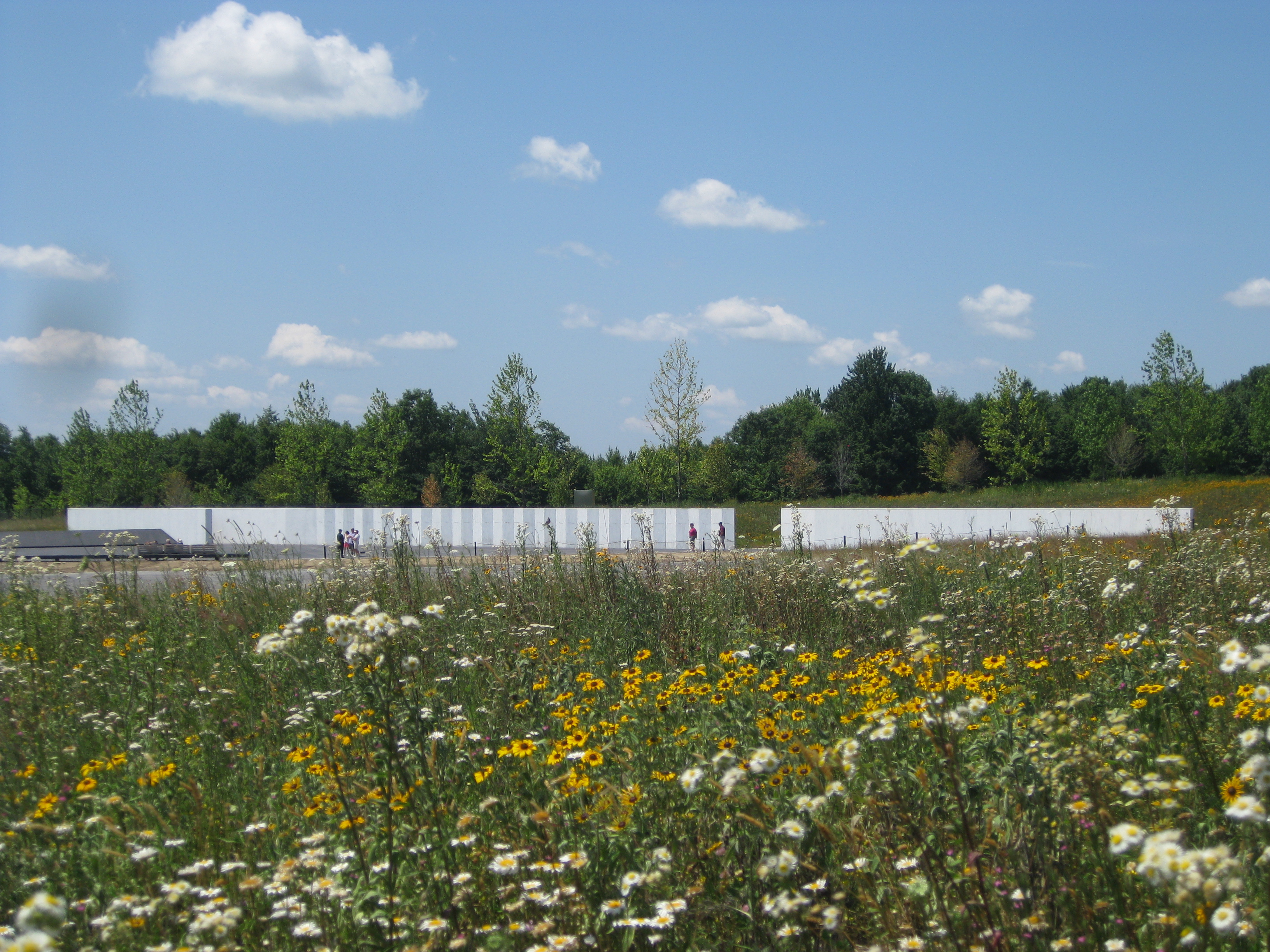
Flight 93 National Memorial
Trail Map
Click the map to enable zoom.
Elevation Profile
Elevation data not available for this trail.
The Flight 93 Story:
On the morning of September 11, 2001, al Qaeda terrorists hijacked four commercial airliners in a attack against the United States. These terrorists flew two jet airliners into the World Trade Center's Twin Towers in New York City and a third aircraft into the Pentagon in Arlington, Virginia.
A fourth aircraft, United Airlines Flight 93, crashed into an open field in Somerset County, Pennsylvania, killing all passengers, crew members, and terrorists on board.
The four aircraft strikes killed nearly 3,000 people, the deadliest attack on American soil by a foreign entity. This is the Flight 93 Story.
There were seven crew members assigned to Flight 93 began to prepare for the early morning non-stop flight from Newark, New Jersey to San Francisco, California.
There were thirty-three passengers. Flight 93 was a Boeing 757, with a capacity of 182 passengers.
The terrorists targeted domestic flights that; normally had few passengers so they would have less resistance, used the type of aircraft that they had been trained to pilot, were non-stop, coast-to-coast flights with full fuel tanks that would cause the maximum amount of destruction, and were departing at approximately the same time so they could make a coordinated, surprise attack.
The hijackers on September 11, 2001, were terrorists on a suicide mission. On that morning, three of the four hijacked flights departed on schedule. However, Flight 93 was delayed more than 25 minutes. Just four minutes after Flight 93 departed, hijacked Flight 11 struck the North Tower of the World Trade Center. At 9:03 a.m., a second hijacked plane, Flight 175, hit the South Tower.
At 9:37 a.m. hijacked Flight 77 crashed into the Pentagon.
The Federal Aviation Administration, at 9:45 a.m., ordered all aircraft to land at the nearest airport. An estimated 4,500 aircraft landed safely without incident. This was the first time such an order had been given in United States aviation history. By that time, though, Flight 93 was not responding to any orders.
At about 9:28 a.m., after 46 minutes of routine flight across Pennsylvania, the terrorists on Flight 93 overtook the cockpit, turning the plane southeast on a course directed toward Washington, D.C., the nation's capital.
The passengers and crew were forced to the back of the plane and told to be quiet. Using airfones, passengers and crew began making calls to report the hijacking. They soon learned the shocking news about the other hijacked planes and quickly realized that Flight 93 was part of a larger attack on America. This realization led to a vote and a collective decision to fight back.
In just over 30 minutes, this diverse group of people on Flight 93 developed a plan and put it into action. The cockpit voice recorder captured the sounds of their shouts, screams, calls to action, and sounds of breaking glassware.
To stop the uprising, the terrorist piloting the aircraft began to roll it to the left and right; pitch the nose up and down. In its final moments, the plane turned upside down as it passed over rural Western Pennsylvania. The terrorists remained in control of the plane and chose to crash it rather than risk the passengers and crew regaining control of the aircraft.
At 10:03 a.m., Flight 93 plowed into an empty field at a speed of 563 miles per hour. Upon impact, the 5,500 gallons of jet fuel on board the aircraft exploded, creating a ball of fire that rose higher than the trees.
The flight data recorder that was recovered from the crash site revealed that the terrorists had reprogrammed the aircraft's autopilot system for a new destination - Washington, D.C. Recovered evidence and responses to interrogations revealed that the terrorists' intended target was most likely the United States Capitol Building.

Flight 93 crashed only 20 minutes flying-time from Washington, D.C. It was the only one of the four hijacked aircraft that failed to reach the terrorists' intended target.
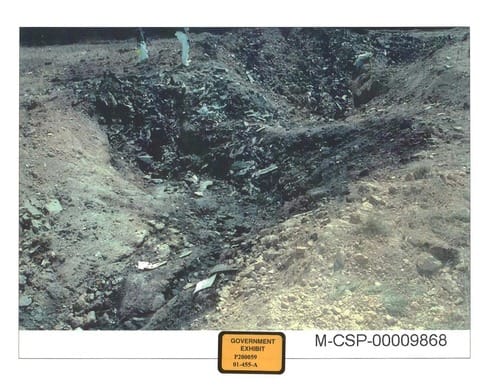
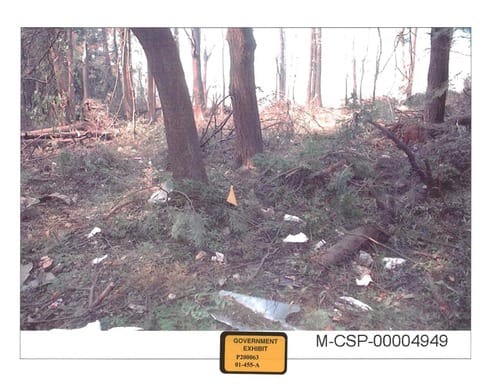
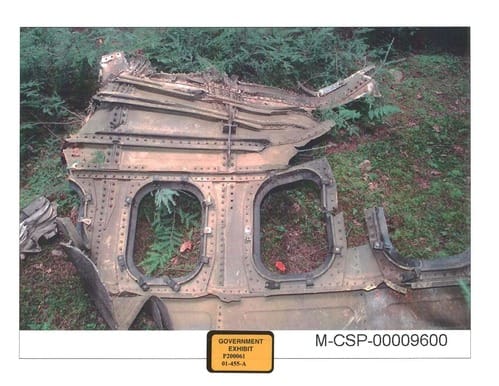
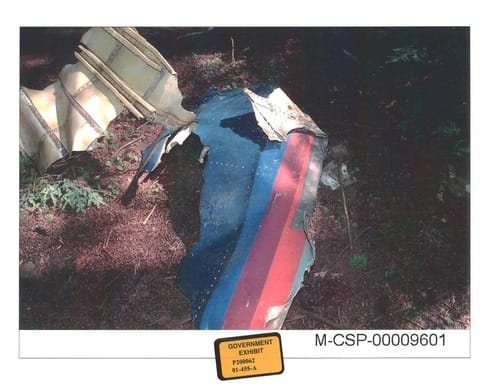
The passengers and crew showed unity, courage, and defiance in the face of adversity.
Today the National Park Service, volunteers, and partners work to honor their actions, and understand fully the legacy of Flight 93 and the events of September 11, 2001.
Location and Purpose of Flight 93 Memorial:
The Flight 93 National Memorial serves to:
- Honor the heroism and sacrifice of the passengers and crew aboard Flight 93.
- Educate the public about the events of September 11, 2001, and the role Flight 93 played in preventing further devastation.
- Provide a place for reflection, remembrance, and national pride in the face of adversity.

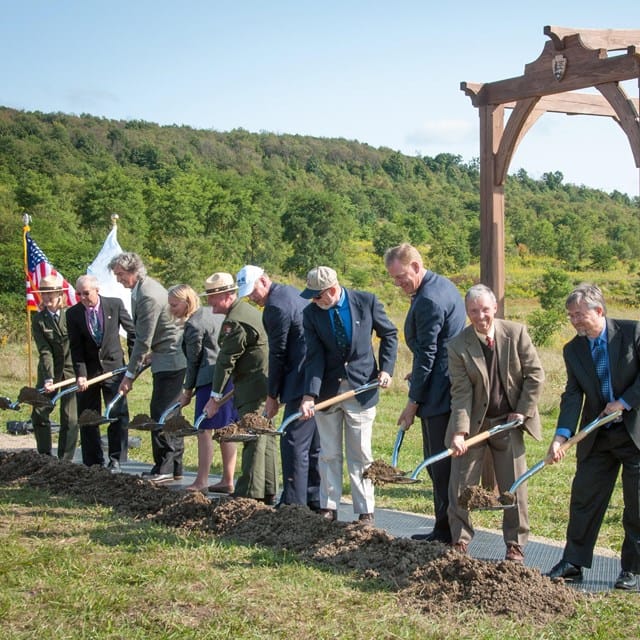
The memorial was formally dedicated on September 10, 2011, the 10th anniversary of the attacks.
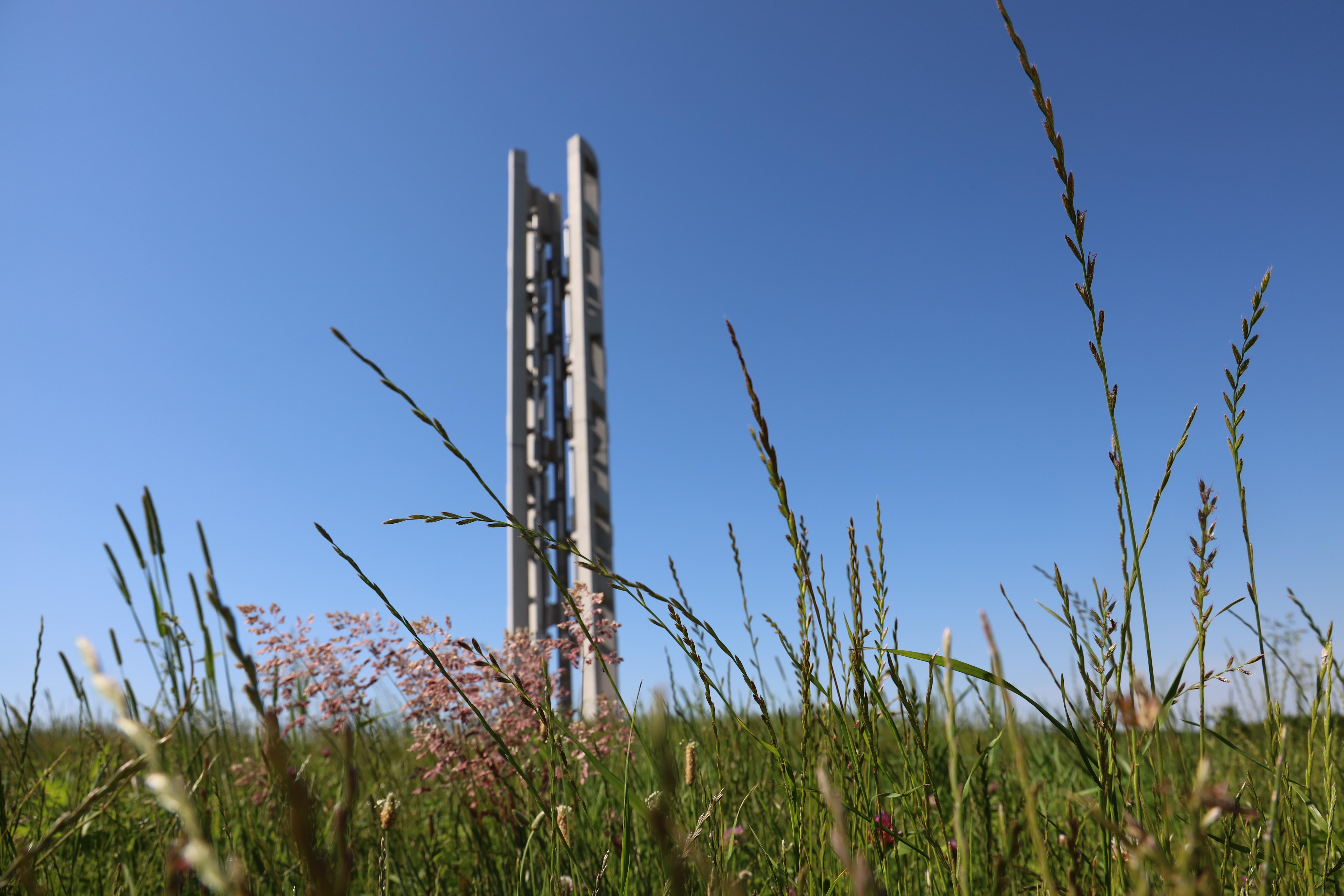
The crash site is located near Shanksville, Pennsylvania, in a rural area of Somerset County. The address is:
6424 Lincoln Highway
Stoystown, PA 15563
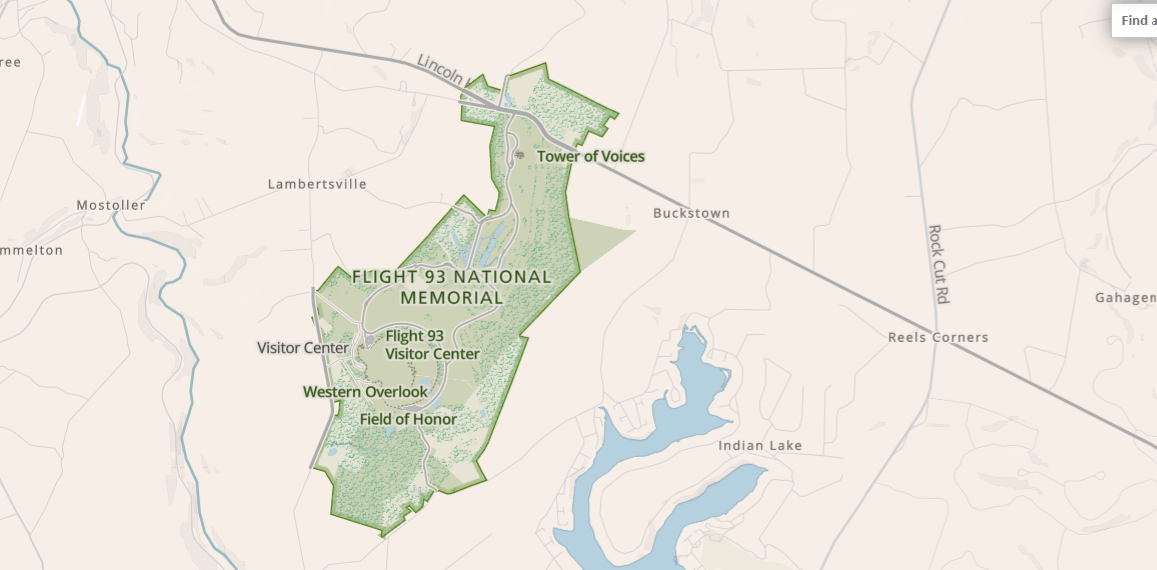
The memorial site includes several elements:
The Memorial Plaza: Where visitors can see the Wall of Names, inscribed with the names of the 40 passengers and crew who died.
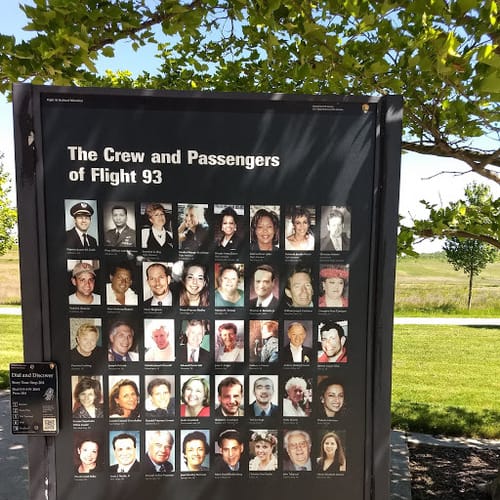
The Wall of Names honors each of the 40 passengers and crew members who lost their lives. Spend some time reading the names and reflecting on their bravery. There are benches nearby if you’d like to sit and contemplate.
The Flight Path Walk: This is the main trail at the memorial.
It was designed to guide visitors through the area near the crash site. It follows the approximate flight path of United Airlines Flight 93 as it descended before crashing.
The Visitor Center: Offers exhibits, interactive displays, and information about the events of September 11, 2001, and the heroism of Flight 93.
Visit the desk and talk with a ranger to learn more about the memorial. The visitor center features a permanent exhibit that focuses on the Flight 93 story within the context of September 11, 2001. Visitors are welcome to a self-guided tour through inter-active exhibits.
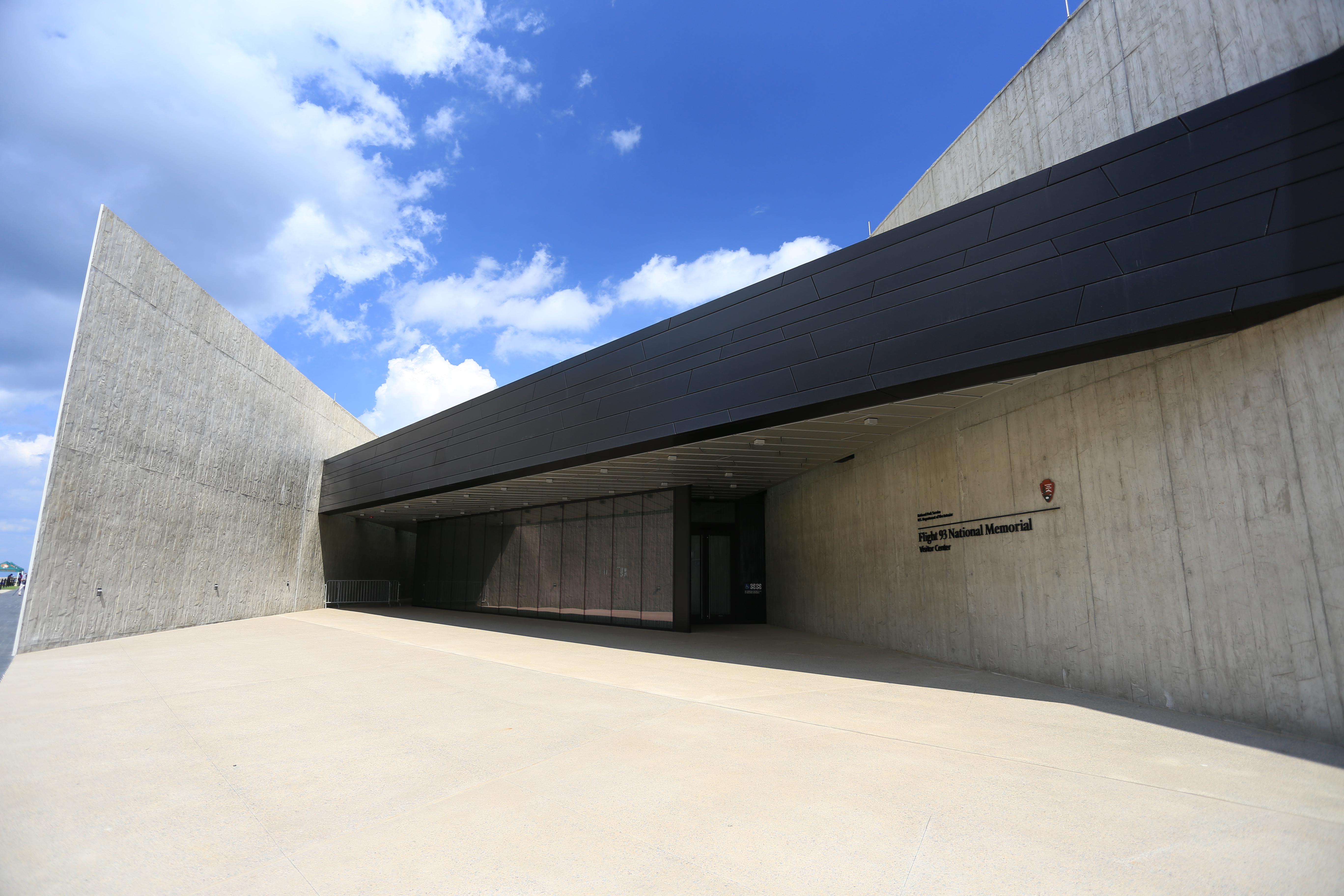
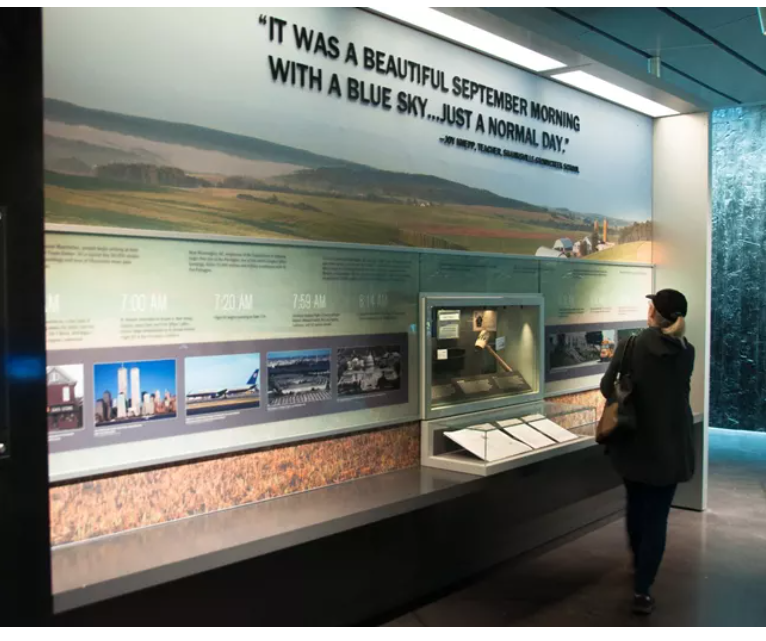
This site is fee-free year-round. No entrance fee or pass is required.
Visitor Center is open daily 9:00 am - 5:00 pm. Closed Thanksgiving Day, Christmas Day, and New Year's Day.
The Tower of Voices: A 93-foot-tall tower containing 40 wind chimes, one for each of the victims.

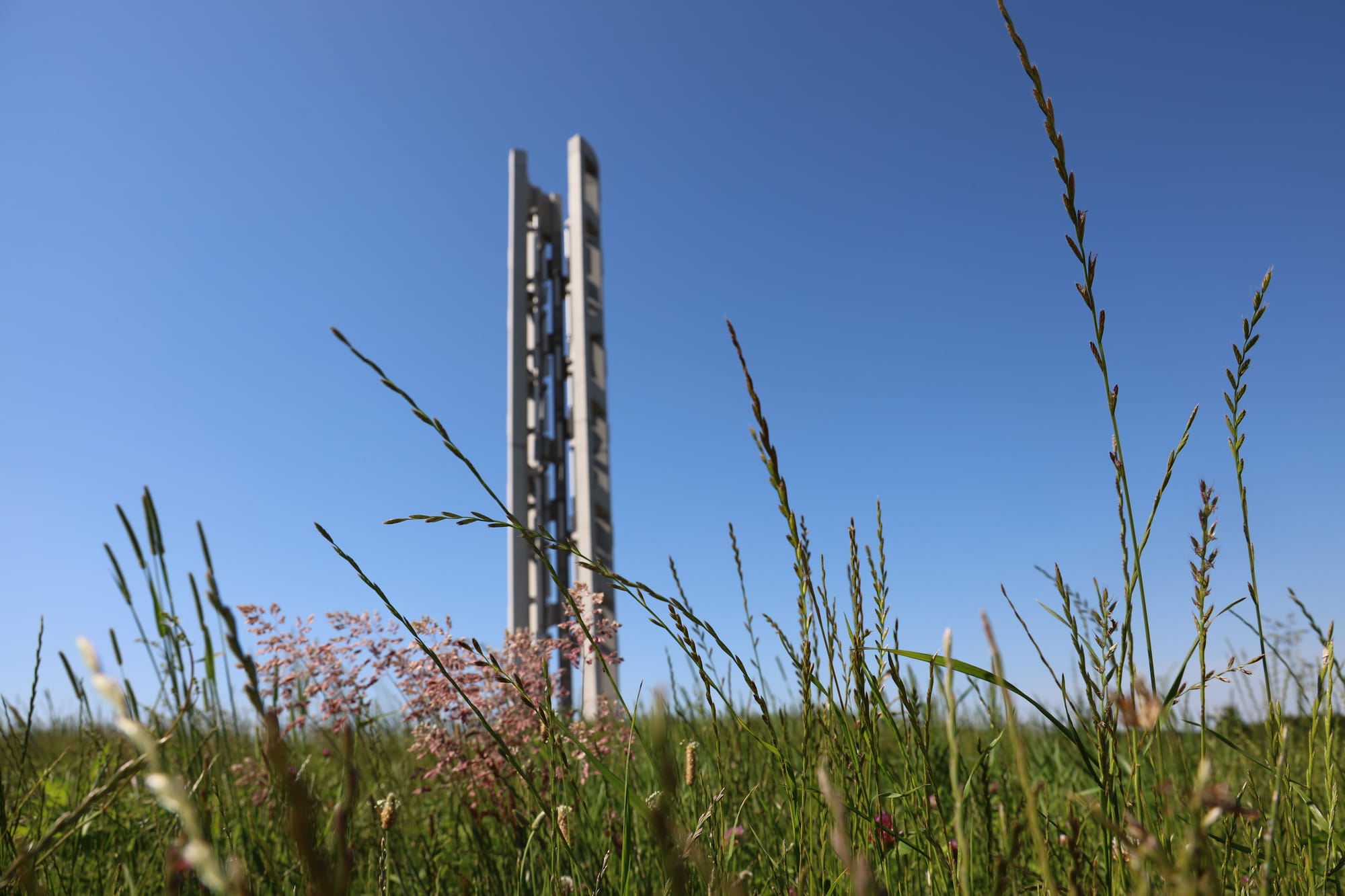
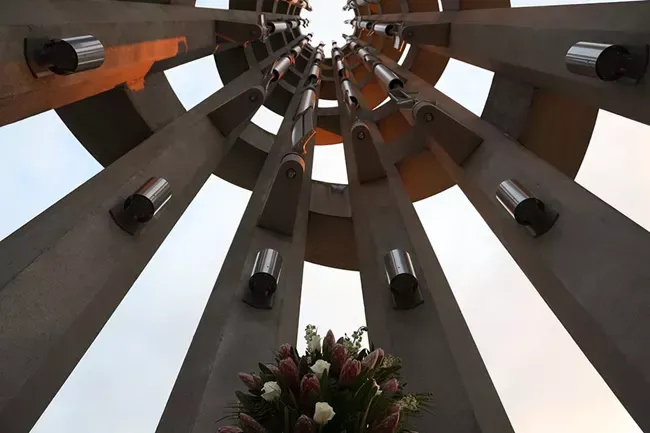
The Tower of Voices serves as both a visual and audible reminder of the heroism of the forty passengers and crew of United Flight 93. On September 09, 2018, Flight 93 National Memorial hosted a dedication event to complete the final phase of construction and complete the permanent memorial.
The chimes were installed and dedicated on September 10, 2020.
The tower is conceived as a monumental, ninety-three feet tall musical instrument holding forty wind chimes, representing the forty passengers and crew members. It is intended to be a landmark feature near the memorial entrance, visible from US Route 30/Lincoln Highway. The Tower of Voices provides a living memorial in sound to remember the forty through their ongoing voices.
It was tower project was constructed from 2017 to 2018 with a dedication of the project on September 9, 2018.
Funding for the design and construction of the project was provided through private donations to the National Park Foundation and the Friends of Flight 93 National Memorial.
There are no other chime structures like this in the world. The shape and orientation of the tower are designed to optimize air flow through the tower walls to reach the interior chime chamber. The chime system is designed using music theory to identify a mathematically developed range of frequencies needed to produce a distinct musical note associated with each chime. The applied music theory allows the sound produced by individual chimes to be musically compatible with the sound produced by the other chimes in the tower. The intent is to create a set of forty tones (voices) that can connote through consonance the serenity and nobility of the site while also through dissonance recalling the event that consecrated the site.
The tower is approximately ninety-three feet tall from the base to the top with some height variations. The Tower cross section is a “C” shape with a fifteen foot outside diameter and eleven foot inside diameter. The “C” shape allows sound to reflect outwardly from the open side in a fan-shaped pattern. The chimes are suspended a minimum of twenty feet above the main plaza and will be suspended from the interior walls of the tower up to the top.
The tower walls are constructed of precast concrete segments linked by connectors. The chimes are constructed of polished aluminum tubes ranging eight to sixteen inches in diameter and approximately five to ten feet in length. The size of each chime is dependent on the musical note and associated frequency that it is intended to produce. The chimes are wind activated and will have internal strikers attached to sails projecting from the bottom of each chime.
The tower is located on an oval concrete plaza that is built on top of an earth mound to create an area more prominent on the landscape. The plaza includes two curved concrete benches facing the opening of the tower.
The tower is surrounded by concentric rings of white pines and deciduous plantings. The concentric plantings may be interpreted as resonating “sound waves” from the Tower, alluding to the auditory qualities of the chimes housed within. A direct paved path leads to the tower from the parking lot. A longer, meandering crushed stone path winds through the trees and allows visitors an alternative approach to the tower. All other landscaped areas of the project will be planted with a native wildflower seed mix similar to other landscaped areas of the park.
Hiking Trails at the Memorial:
The Flight 93 National Memorial offers a few hiking trails that vary in length, difficulty, and scenic appeal. Below is a description of the primary hiking trails at the memorial, including their lengths and difficulty levels:
1. The Flight Path Walk
- Length: Approximately 1 mile
- Difficulty: Easy
- Description: The trail includes several viewpoints with interpretive signs that provide details about the crash and the heroic actions of the passengers and crew. The path is mostly flat and accessible, making it suitable for most visitors, including those with mobility impairments.
2. The Memorial Grove Trail
- Length: Approximately 0.5 miles
- Difficulty: Easy to Moderate
- Description: This shorter trail takes visitors through a grove of trees planted in honor of the passengers and crew of Flight 93. It offers a more intimate experience and a place for quiet reflection. The trail is mostly flat but has a few gentle inclines. It provides views of the surrounding landscape and helps visitors connect with the solemnity of the site.
3. The Overlook Trail
- Length: Approximately 0.75 miles
- Difficulty: Moderate
- Description: This trail takes visitors to an overlook that provides a panoramic view of the memorial and the surrounding area. The trail is a bit more rugged than the others, with some elevation gain, but it is still accessible to most people with average fitness levels. The trail leads to a viewpoint where visitors can see the location of the crash and the Flight Path Walk, as well as the wider landscape of the memorial.
These trails provide a meaningful and scenic way to explore the memorial, while offering various levels of challenge for different visitors. The paths are well-maintained and offer interpretive signage to enhance the educational experience.
All Park Hours:
Every Day: Sunrise–Sunset
Park grounds and trails are open 7 days a week, 365 days a year, from sunrise to sunset. Harsh winter weather may result in delayed openings and closures. Occasionally, the gates may be closed, prohibiting entrance to the grounds, when adverse weather occurs or is predicted, to allow road crews to work safely to clear all roads within the national memorial. Call 814-893-6585 for weather-related updates.
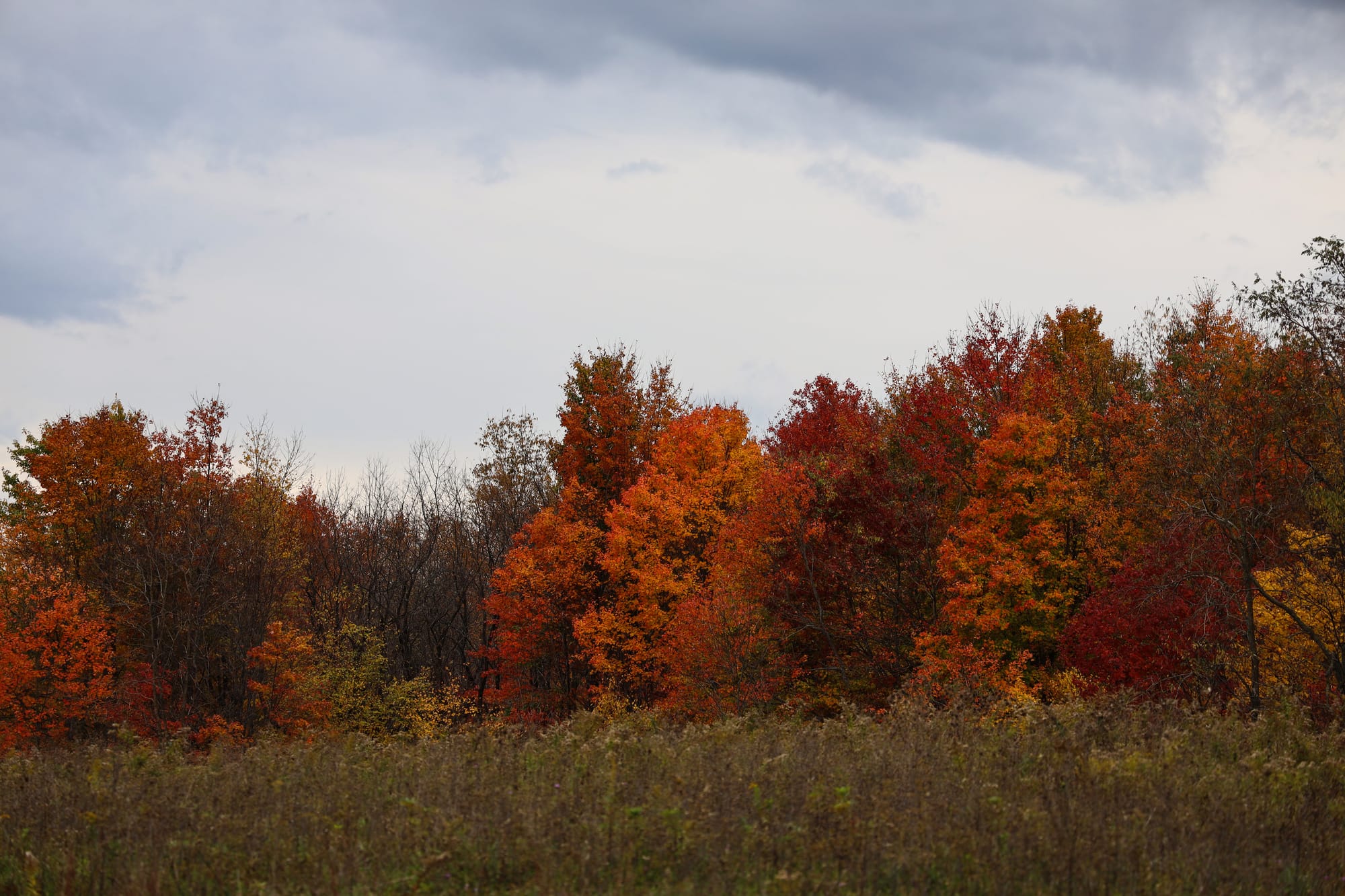


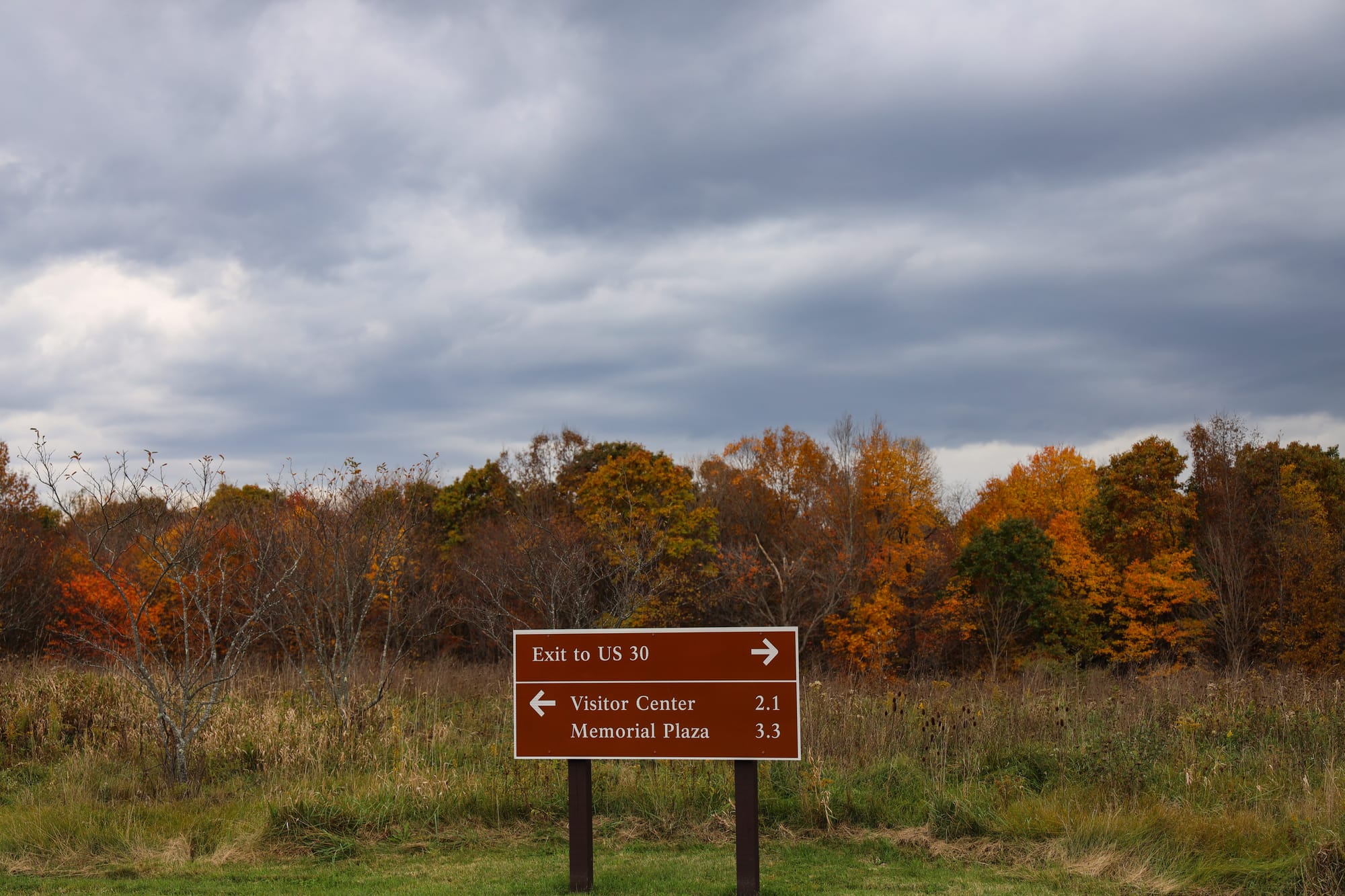
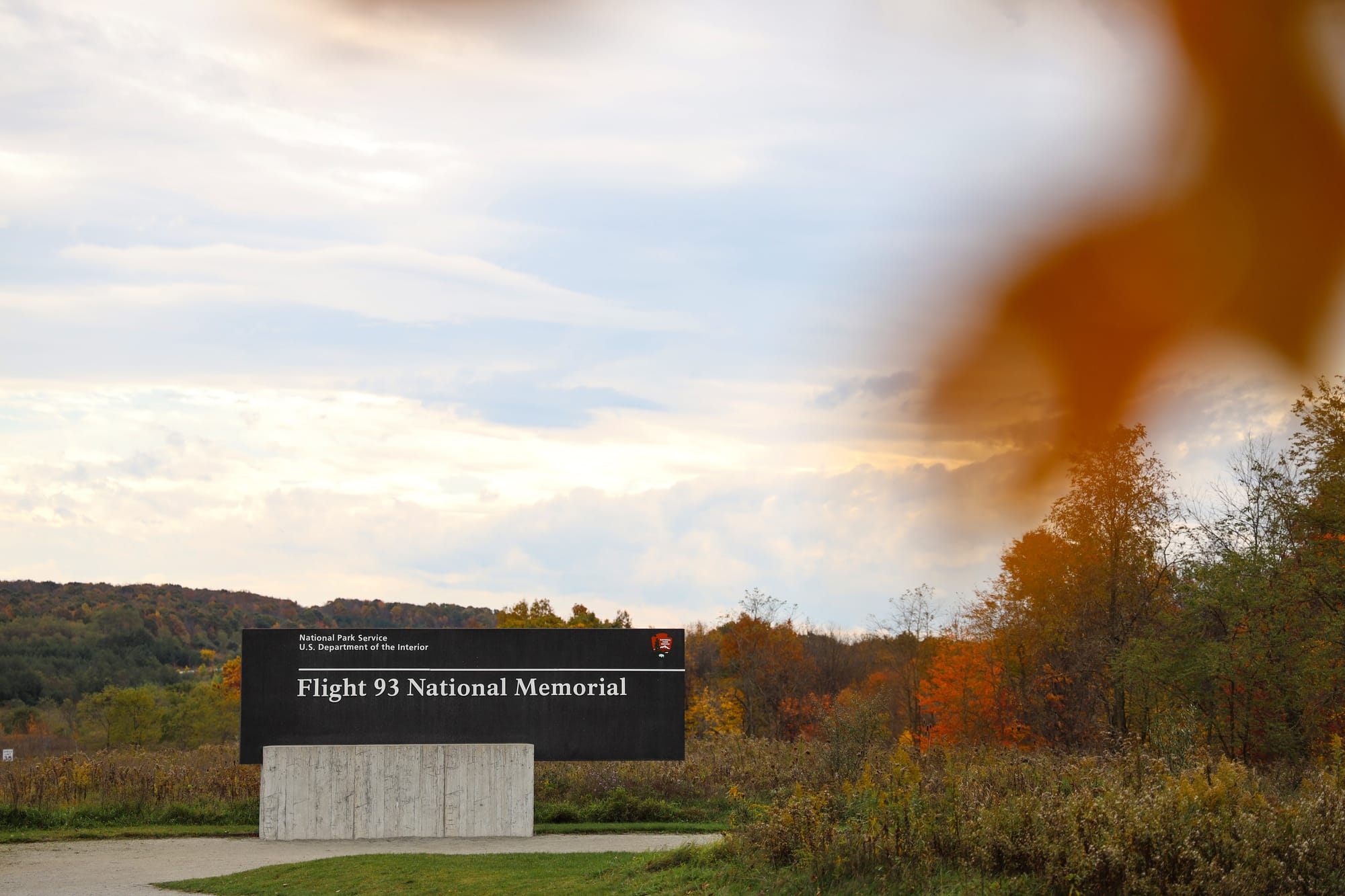
Conclusion:
Flight 93 National Memorial is more than just a place to hike; it’s a destination that invites you to connect with history, nature, and the spirit of resilience.
Visiting the Flight 93 National Memorial is not just about learning history; it’s about honoring the heroes who faced unimaginable circumstances with courage and selflessness. It’s a beautiful place for reflection, education, and remembrance. We hope you enjoy your visit and take with you the spirit of bravery that this site represents. Safe travels!
